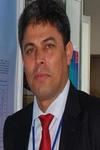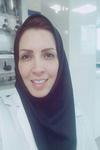Day 3 :
- Aquaculture Law and Policy | Diversification in Aquaculture | Aquaculture Nutrition & Supplies | Aquaculture Economics & Management | Benefits of Aquaculture
Location: Rome

Chair
Rune Waagbo
NIFES, Norway

Co-Chair
Priyum Koonjul
Aligo Innovation, Canada
Session Introduction
Thomas Ellegaard Mohr
ANDRITZ Feed & Biofuel
Denmark
Title: Extruded aqua feed quality management; relations between technology and extruded aqua feed quality

Biography:
Thomas Ellegaard Mohr holds a degree in Marine Engineering and Technology Management. He joined ANDRITZ Feed & Biofuel in 2015, before joining ANDRITZ. He has been working in the process industry since 2008, as Installation & Commissioning Engineer, Technical Advisor and Sales Manager, before being hired as Sales Application Manager at ANDRITZ Feed & Biofuel, with focus on Petfood & Aqua Feed Extrusion.
Abstract:
One of the keys to successful fish farming lies in correctly adapted feed formulas, high quality ingredients, controlled homogenous content and optimum physical feed pellet properties. In order to keep pace with these increasing demands, industrially produced feed is undergoing a continuous quality improvement process. The different types of feed are subject to different demands, the feed/food’s functionality, for example, on fish farms in terms of floatability or sink ability and the pellets durability to assist mechanical handling without generating of fine. As the demand for feed increases, this influence the availability of classic raw material, this gives new challenges to ensure that the extrusion technologies and process control are developed to adapt accordingly.
Hyeon-Ok Shin
Pukyong National University
Korea
Title: Visual spectral sensitivity of rock bream (Oplegnathus fasciatus) by the LED light

Biography:
Hyeon-Ok Shin has completed his PhD at the age of 33 years from Tokyo University of Marine Science and Technology of Fisheries Science. He is the professor of the Division of Marine Production System Management, Pukyong National University. He has published more than 76 papers in reputed journals and has been serving as an editorial board member of repute.
Abstract:
The characteristics of aquatic light fields are generally reflected in the visual systems of fishes inhabiting them. Therefore, research on light sensitivity of fish may be useful to explain the correlation between visual function and habitat, behavior and distribution of fish. Rock beam are important species in coastal ecology and also one of the main species for aquiculture in Korea. To maintain resources and understand ecology of rock bream, a spectral sensitivity of scotopic rock bream (N=5, TL=14.5±1.8 cm, W=59.3±20.4 g) in the range of visible light (408 to 656 nm) was investigated using light-emitting diodes (LEDs). In order to assess electrophysiological response of fish, an electroretinogram (ERG) of the dark-adapted eyes of fish was recorded. ERG potentials were recorded by using three silver-wire electrodes (540800, A-M systems, USA, Ø0.2×L11 mm): the recording electrode was placed on the corneal surface and the two reference electrodes were placed on the skin around. Two of four typical waves (a-, b-waves) of ERG potentials were observed. To determine spectral sensitivity, we measured the b-wave amplitude for each individual. In the dark adapted rock bream (n=5), a spectral sensitivity peak was estimated by fitting function at approximately 499 nm. Collectively, these results demonstrate that the rockfish has suitable visual capabilities for inhabiting coastal water.
Priyum Koonjul
Aligo Innovation
Canada
Title: Knowledge management and intellectual property issues in aquaculture

Biography:
Priyum Koonjul is the Director, Business Development at Aligo Innovation, Canada. She worked as a sales representative for five years for Biometra (Cape Town, South Africa), a company specializing in instrumentation for laboratories and more specifically, she focused on instrumentation geared for molecular biology. Priyum has also worked in the management and transfer of intellectual property, as a valorization agent at University of Quebec in Montreal. She holds a double major B.Sc. (Biochemistry and Microbiology), a B.Sc. (Hons.) and a Ph.D. in biochemistry from the University of Cape Town (UCT) in South Africa. She was also a post-doctoral fellow in Human Genetics at UCT and in plant biochemistry at IRBV (University of Montreal).
Abstract:
An encouraging fact in the aquaculture world today is the extent to which the science is driven and how knowledge-intensive the enterprise has become. We are all talking about the ‘blue revolution’ and how the use of aquatic resources has a significant potential in a number of fields ranging from pharmaceuticals, diagnostic and analytical reagents to excipients in the cosmeceutic and nutraceutic markets.
The fast developing cosmeceutic and nutraceutic industries are forcing ingredient manufacturers to focus on developing better ingredients since consumers are looking for higher performing and scientifically proven products and are willing to pay the extra money. The sea is a perfect source with its multitude of active ingredients. And yet, are we really protecting all intellectual property arising from our aquaculture research?
Most likely, the reason is that we still need to define and understand what intellectual property (IP) entails and then only once the concept is grasped totally, will we be able to protect our IP emanating from the marine world properly.
Mohammad Tabish
Advanced National Aquaculture and Fisheries
UAE
Title: Marine fish farming in UAE – Redirecting the economy towards community development, environment and natural capital viability values

Biography:
Mohammad Tabish is a targeted Marine Resource Manager sailing for two decades upon untamed waves, focusing Emirates waters. After an industrial hatchery transition mirroring Mediterranean advances in arid Kuwaiti desert-saline conditions at GIAC ; secondarily, it was on combining economic and industrial development with sustainability as an evolving process with Asmak PJSC cage farms ; a systematic regulatory assistance for integration of society, economy, environment and culture with MOCCAE envisioning a stronger and more secure Ocean resource markets followed forth ; then as a credible truther with ANAF on investing in new opportunities, innovation & sustainable activities his ambition and realism led to viable blue colored public-private partnerships, driving change through purpose-driven companies for a mutual participatory extraction of extra values on UAE culture-based fisheries and stock enhancement. Research and innovation are part of ANAF’s own DNA while drawing diversity on farms and plates.
Abstract:
A new food policy paradigm has emerged in UAE, stressing eco-traceable, on-land produced fish, addressing cosmopolitan consumer demand of Bass and Bream transcending to a host of native sparids and outshining further to groupers, Amber Jacks and Red Snappers within diversified farms (pens and sea cages to greenhouse ponds and RAS systems) and diversified diner’s plates (Asians, Nationals, Arabs, Far East & Westerners). At national level, considerations for leveling seafood prices, balancing producer and consumer interests transformed today to niche segment demands as a societal health reflection of dietary choices (saturated fatty acids of European Breams for infants and expectants/lactating) to high n-3 HUFA fortified fillet-friendly Groupers, Salmon & Kingfish. Profound quantitative research in UAE food policies has discerned behavioral indicators, linking home-choice front as market-determining business species variables. Governmental policies have solicited proactive public-private partnered (PPP) scientific solutions for the blue economy. Unlocking scientific native fish farming potential of Emirates seas as pivotal need for Emirates, rather than locking the breeding keys, ANAF focused upon local knowledge capacity enrichment as skill development vocational culture, streaming into local industry. As conquest of Blue frontier is highly eco centric, ensuring that ocean sphere is deemed the next wave of sustainable fish farming, we produced 20 million fingerlings last two years. The continued knowledge accrual through PPPs would enhance profitability and growth performance of small, medium and large aquaculture enterprises, combining and transferring new and existing knowledge into innovative, competitive solutions seizing futuristic global business opportunities. The neo liberalization of Gulf natural resources - governance, privatization, financial investments and economic valuation has just begun. Analytical thoughts on overall Blue farming needs UAE society integrating biological economies and social sciences have been discussed and reported.
Gyeom Heo
Pukyong National University
Korea
Title: Effects of water temperature and LED lights on the behavior of rock bream (Oplegnathus fasciatus)

Biography:
Gyeom Heo has completed her Master's degree from Pukyong National University. She is majoring Fisheries Physics at Pukyong National University.
Abstract:
Effects of water temperature and LED lights on the behavior of rock bream (Oplegnathus fasciatus): The water temperature is an important variable in the growth of the fish and rapid changes of the water temperature can have a significant impact on the growth and physiological homeostasis of the fish. The study on the use of LED light sources was conducted in many field of study including fishery. The experiments were conducted for analyzing the behavior of fish on the different temperatures and searching a good LED lights on the growth of fish. And the experiment was conducted two times. In the first experiment, One red light (wave length: 622 nm; light power: 811 mW), one green light (wave length: 518 nm; light power: 648 mW) and control were used. Water temperatures from 5 degree to 30 degree were changed. In the second experiment, one green light and one red light and control were used for 1 day. For the experiment, CCTV cameras were used and the fish (target) in the recorded images was tracked by software. For the behavior analysis of the fish, AMD (average moving distance for 1 min) was used for indicator. The mean AMD were respectively 5.3 m, 7.3 m and 3.0 m in the red LED light, green LED light and control condition. The mean AMD during 24 hours were respectively 3.1 m, 3.1 m and 3.3 m in the red LED light, green LED light and control condition respectively.

Biography:
Mahsa Jalili is a PhD candidate of Medical Technology. Her project is about diet and inflammation in Atlantic salmon.
Abstract:
Background Different dietary fat is one of the important factors in the regulation of immune response. Fish oil rich (FO), phospholipid rich (PL) and vegetable oil (VO) based feedings can affect the expression of pro- and anti-inflammatory interleukins in wild (W) and aquaculture (A) fish. To investigate the role of these diets on inflammation, we conducted a 12 weeks experiment on Salmo salar larvae in Frøya aquaculture facility, NTNU.
Methods The gill samples of aquaculture type fish (A) and wild type fish (W) were collected and kept at -80 until day of analysis. The RNA was extracted and gene expression of pro-inflammatory interleukins such as IL-8, IL-17, IL-17 receptor and MHC-II and anti-inflammatory interleukins such as TGF 1-beta and IL-10, and the fatty acid related factors was measured by RT-PCR.
Results The gene expression findings were significantly different among 6 groups for pro-inflammatory markers IL-8, IL-17, IL-17 receptor and MHC-II, and anti-inflammatory markers TGF1-beta and IL-10. There were not significant differences among the fatty acids related factors. The gene expression of IL-8 in AFO (Aquaculture fish with vegetable oil rich feeding) group compared to AVO group, in WFO group compared to WVO group, and in WPL group compared to WVO group was downregulated significantly as Ct change fold values 0.12, 0.12 and 0.23 times, while this parameter was upregulated significantly 13.54 and 26.01 times in AVO versus WPL groups and AVO versus WFO groups. The ratio was higher in APL group compared to WFO group.
Conclusion The n-3 fatty acids in PL diet are different from FO diet, there are more phospholipid rich n-3 fatty acids from krill oil and herring roe resources that result in a reduced inflammatory response regarding to mRNA level of IL-8 in the gill.

Biography:
Serotonin (5-HT) and dopamine (DA) are major neurotransmitters that have been reported extensively to play physiological processes in both vertebrates and invertebrates. In the present study, the distribution and dynamic expression of 5-HT and DA in the central nervous system (CNS) and gonads of the sea cucumber Holothuria scabra during gonadal development cycle have not yet been reported. Therefore, the aims of this study were to investigate the existence and expression of these neurotransmitters in the CNS and gonads in different stages of ovarian cycles. 5-HT-immunoreactivity (-ir) was more intense in the neurons and neuropils of neural parts of ventral nerve cord in late stages, whereas DA-ir was detected at high intensity at the early stages. In the ovary, high 5-HT intensity was present in the late oocyte stages, while DA-ir showed high intensity in early oocyte stages. The changes in the levels of the 5-HT in the neural tissues are coincident with changes in the ovarian tissue levels. In contrast, DA concentrations in the nervous tissues and oocytes were more intense and decrease in late stages. These findings suggest that the presence and distribution of 5-HT and DA may be involved in modulation of the reproductive process, including development of oocytes in this species, and this work provides important point of view of these major neurotransmitters in possible applications in sea cucumber aquaculture.
Abstract:
Arada Chaiyamoon is a Ph.D.candidate, at the age of 31 years from the Department of Anatomy, Faculty of Science, Mahidol University, Thailand. Her researh area focuses on endocrinology of the sea cucumberand possible applications in aquaculture.
Nchumbeni Humtsoe
District Fishery Office Wokha
India
Title: Use of intertidal clam flesh as one of the feed ingredients for fish culture

Biography:
Nchumbeni Humtsoe obtained her Ph.D. Degree from University of Mumbai, India on the topic “Growth performance and biochemical composition of Labeo rohita to feed containing Katelysia opima and Nerita species,” and completed a course on “Professional Planning and Development Programme in fisheries” from CIFE, Kolkatta, India . She was one of the Keynote speaker during the 6th Global Summit on Aquaculture and Fisheries held at Osaka, Japan. She had represented scientist team from India and attended 7th Indo-Pacific fish Conference at Taiwan and presented a paper on topic, “Effect of arsenic on the enzymes of freshwater fish Labeo Rohita” which was published in reputed international journal. She had presented research papers on several national conferences and delivered lectures in various scientific programs. She is a competent researcher and can work well in team with good communication skill and tackle any challenges positively. She is specialized in fish nutrition and feeding technologies. She is a life member of Indian Fisheries Association since 2008 and life member of Nagaland Fisheries Technical Association and currently working as a Fishery Inspector in the Department of Fisheries, Government of Nagaland, India.
Abstract:
A six months feeding experiment was conducted to evaluate the incorporation of five feed ingredients with the flesh of Katelysia opima in the diet of Labeo rohita. Fingerlings of Labeo rohita weighing 2-4 gm were divided into six groups and fed with prepared feeds using five different feed ingredients such as ground nut oil cake, tapioca flour, rice bran and wheat flour along with different levels of the flesh of Katelysia opima as experimental diets. A control group of rohus fingerlings was maintained on pelleted feed without adding the flesh of Katelysia opima. Fishes were fed twice daily with the respective test diets at the rate of 4% body weight during entire culture period of three months. Results regarding growth performance of L.rohita fingerlings fed on different experimental diets showed that the best growth performance of fish in terms of percentage live weight gain was noted as 121.14 % where as 90.72% was noted with control diet which is prepared without adding the flesh of Katelysia opima . Maximum increase in length (4.07cm) was noticed in the fingerlings fed with highest level of the flesh of Katelysia opima compared to minimum increase in length (2.92cm). Specific Growth Rate (SGR) per day of fish fed on different experimental diets was noted in the range of 0.41 – 0.58 percentage. The feed conversion ratio observed 3.036 was highest in fish fed with highest level of the flesh of Katelysia opima compared to fish fed on control diet which is noted as 2.782. This study reveals that incorporation of the flesh of Katelysia opima in different feed ingredients is one of the best animal proteins in terms of growth and feed conversion which is optimum for growth of Labeo rohita.

Biography:
Cyrell N. Ate recently graduated last May 2017 with a course of Master of Science in Biology at Ateneo de Manila University. She aspires to be an agent of change and development to help communities especially local fish farmers through information dissemination and research. She is also eyeing to gain more knowledge in the field of aquaculture and algal research.
Abstract:
Alternative feed ingredients for high value cultured fish are necessary to lessen feed amount and operation costs while meeting the fish’s nutritional requirements. Sargassum fulvellum (SFM) supplementation in diets of juvenile Nile tilapia (Oreochromis niloticus) was employed to determine its effect on growth performance, feed utilization efficiency, HSI/VSI, carcass composition, blood profile, and liver histopathology. O. niloticus were fed five iso-nitrogenous and iso-lipidic test diets: positive control, negative control, 3% SFM meal, 6% SFM, and 9% SFM for 56 days in a recirculation set-up. Highest average weight gain (545.70±5.47%), specific growth rate (18.45±0.28%), highest percentage survival (88±17%), and viscera somatic index (12.44±0.74) were observed in 6% SFM diet. No significant differences (P>0.05) were observed in the serum components. Liver histopathology results seem to be dose dependent making the diet toxic at higher supplementation levels. Nonetheless, supplementation diet of 6% SFM deemed competitive as compared to standard feeds.
- Sustainable Aquaculture | Aquaponics | Fishing Technology | Ethical Issues in Aquaculture & Fisheries | Aquaculture Related Diseases and Health Management
Location: Rome

Chair
Hyeon-Ok Shin
Pukyong National University, Korea

Co-Chair
Rosa Zupa
University of Bari Aldo Moro, Italy
Session Introduction
Rosa Zupa
University of Bari Aldo Moro
Italy
Title: Rearing in captivity affects fish spermatogenesis through changes in germ cell proliferation and apoptosis

Biography:
Rosa Zupa is a Biologist whose research activity is focused on teleost reproductive biology. In particular, she studies the effect of confinement in captivity on gametogenesis in teleost species candidate to aquaculture. She has worked on Atlantic bluefin tuna domestication within the EU project SELFDOTT and the Apulian regional project ALLOTUNA. Currently, she is participating to the EU project DIVERSIFY on aquaculture species diversification. Her expertise includes analysis of germ cell proliferation and apoptosis.
Abstract:
Spermatogonial proliferation and loss of germ cells via apoptosis are critical processes during fish spermatogenesis. The correct balance between spermatogonial self-renewal and differentiation towards meiosis determines the eventual sperm output. Moreover, apoptosis, a form of programmed cell death, plays a role in maintaining a correct Sertoli/germ cells ratio, limiting germ cell population and preventing maturation of aberrant germ cells. These processes are controlled by pituitary gonadotrophins-follicle-stimulating hormone (FSH) and luteinizing hormone (LH) - whose release is stimulated by gonadotropin-releasing hormone (GnRH). Most male fish reared in captivity display reproductive dysfunctions which are supposed to be caused by an insufficient pituitary stimulation by GnRH, and the consequent inadequate gonadotropin release, as a result of the combination of captivity-induced stress and lack of adequate natural spawning conditions. The effects of rearing in captivity on large pelagic fish (Atlantic bluefin tuna Thunnus thynnus; greater amberjack Seriola dumerili) germ cell proliferation and apoptosis are herein argued. In captive-reared Atlantic bluefin tuna, a delay of spermatogonial proliferation and an increase of germ cells apoptosis (Fig. 1) were associated to low 11-ketotestorone (11-KT) levels. In captive-reared greater amberjack, a high level of germ cell apoptosis at the beginning of the breeding phase was observed, along with a progressive decrease of germ cell proliferation during the reproductive season. Both in Atlantic bluefin tuna and greater amberjack, the observed gametogenesis dysfunctions eventually resulted in low quality sperm production and, in Atlantic bluefin tuna, they were alleviated by the administration of a GnRH agonist (GnRHa). Proper rearing practices, including handling procedures that minimize stress, along with hormonal therapies, are recommended to ameliorate spermatogenesis dysfunctions.
Siti Hasmah Mohtar
University of Selangor
Malaysia
Title: Exploitation of medicinal plants as immunostimulant and therapeutic agent in black tiger shrimp (Penaeus monodon)

Biography:
Siti Hasmah Mohtar has completed her PhD in the field of Biosciences at University of Nottingham. She is the Head of Department and Programme Coordinator under the Department of Science and Biotechnology, Faculty of Engineering and Life Sciences, University of Selangor.
Abstract:
Global production of black tiger shrimp (Penaeus monodon) demonstrates significant reduction due to infections and disease outbreak. In 2010, Acute Hepatopancreatic Necrosis Disease (AHPND) or also known as Early Mortality Syndrome (EMS) has been reported in southern China and spread to other Asian countries including Vietnam, Thailand and Malaysia. The bacterial agent of Vibrio parahaemolyticus that carry the toxin related genes (pirA and pirB like genes) has been identified as the causative agent of AHPND. Prevention of diseases using chemotherapeutic agents had demonstrated drawbacks, including the potential development of antibiotic resistant bacteria and spread of toxic residues. Enhancement of immunity and disease resistance of black tiger shrimp through the employment of immunostimulant has been considered as an alternative strategy over the current usage of chemotherapeutic agents. The present study was aimed to evaluate the efficacy of two local medicinal plants, Piper betle and Centella asiatica as potential immunostimulant in promoting the growth performance and enhance the immunity of black tiger shrimp. The medicated feed incorporated with different concentration of methanolic extract of Piper betle and Centella asiatica (10%, 20% and 30%) were prepared for the feeding experiment. The immunostimulatory and therapeutic effect of both plant extracts were determined based on the growth performance, haematological analyses, total bacterial load and antimicrobial properties. Shrimps fed with herbal medicated diet demonstrate an enhancement of growth performance and immunostimulatory activity in comparison with shrimps fed with basal diet. Herbal medicated diet had proven to boost the immunity and health condition of black tiger shrimp.
Letizia Passantino
University of Bari Aldo Moro
Italy
Title: Melano-macrophage centres in lymphoreticular organ as indicator of fish health state

Biography:
Letizia Passantino completed her Graduation in Biology and PhD in Morphology of Aquatic Species. She works as an Associate Professor in Veterinary Anatomy at University of Bari Aldo Moro, Italy. Her fields of interest are focused on teleost fishes: Morpho-functional and immunological aspects of the lymphoreticular tissues, as head kidney, spleen, liver and mucosa-associated lymphoid tissues, and immune response by macrophage and "non-immune" cells such as nucleated erythrocytes and platelets. Furthermore, she described important aspects regarding Melano-macrophage centres-their origin, the possible role and relationships they may have with macrophages and/or other cells, confirming the hypothesis that they can act as metabolic dumps. Her morphological, functional and immunological evaluations can represent a useful tool for diagnosis and therapies in fish farming.
Abstract:
Sustainable aquaculture depends on a perfect balance between growth and healthy conditions of fish. The consumption of freshwater and salt water fish poses serious food security problems for both producers and consumers; hence, monitoring of the health status of these species could lead to a better understanding of the issues associated with improving fish production and generating results of considerable scientific and economic interest in a broad spectrum. Fish immune system comprises: head kidney, spleen, thymus, liver and mucosa-associated lymphoid tissues as in the gut and cells such as lymphocytes, monocytes, macrophages and granulocytes (1-2). Melano-macrophage Centers (MMCs) are defined as a group of pigmented macrophages or as a nodular cluster of macrophages characterized by heterogeneous inclusions such as degradation products of cells, foreign material and microorganisms. MMCs move freely inside the parenchyma of lymphoreticular tissue and, ultimately, become larger and encapsulated as a special type of granuloma-like formation (Fig. 1), playing an important role in terms of innate immune defense against pathogens and elimination of exhausted cells, mainly erythrocytes. MMCs are often observed in close proximity of blood vessels and their amount can increase in case of protozoal, bacterial and mycete infections. Noteworthy, number, size and pigment distribution of MMCs depends on the fish species, organs, age, sexual activity, nutritional status and fish health. In our studies, MMCs were morphologically characterized by haematoxylin-eosin; their chemical content was revealed by Mallory's method for lipofuscin/ceroid and Perl’s stain for hemosiderin; lysosomal activity was demonstrated by α-naphthyl acetate esterase and peroxidase for macrophages. Furthermore, an increase of MMCs has been associated to the expression of biomarkers (Cyp1A and vitellogenin) exposure to a variety of pollutants. MMCs role as metabolic dumps and their utility as indicator of fish health state are discussed.
Mir Dilgeer Mahdi
Govt. College for Women Nawakadal
India
Title: Biochemical environment and sustenance of Schizothorax spp. in river Jhelum of Kashmir Himalayas in India

Biography:
Mir Dilgeer Mahdi completed his PhD in 2011 at University of Kashmir, J&K, India. He was appointed as an Assistant Professor in Department of Higher Education in J&K, India. He has more than 15 years of Research experience and is teaching Zoology for last 10 years. He has published more than 15 papers in reputed journals and has attended number of national and international research conferences in India.
Abstract:
The river Jhelum (an important tributary of Indus River) is main drainage system of Kashmir valley originating from Pir Panjal range of Himalayan mountains connected by all other lentic and lotic habitats in the valley. The river system revealed an appreciable variation in the physicochemical environment and depicted typical lotic phenomenon with temperature <10°C, alkaline (pH, 7.9-8.3), hard (hardness, 72-240 mg/L) and with significant variation in nitrogen and phosphors concentration. A total of 27 taxa of macrozoobenthos recorded in the Jhelum system among which arthropod was dominant (18 taxa) followed by Annelida (6 taxa) and mollusca (3 taxa). The species diversity (H-Index) was recorded highest as 3.2 in main river and species richness was recorded highest in the tributaries feeding the Jhelum. In response to changing limnological characteristics of river Jhelum system, the fish fauna of the valley is quite different from rest of India and is dominated by the Schizothoracinea (snow trout) group. A total of 19 species of fishes belonging to cypriniformes, siluriformes, cyprinodontiformes and salmoniformes among which dominant species of fishes are Schizothorax plagiostomus, S. labiatus, S. esocinus and Glyptosternon reticulatum. The ichthiofauna of the tributaries of the Jhelum is rather limited and different in nature, particularly in the fast flowing zones of the streams. The mean range of fishing effort in the river system was 170 g-350 g per man-hour, which is less than 50% of that reported earlier. Since fishing effort is an index of the fish population structure in a water body, it clearly indicates that the fish population in the river has declined, probably as a consequence of the ecological stress.
Oluwafemi Babatunde Oduntan
University of Ibadan
Nigeria
Title: Effect of processing parameters on the physical properties of pineapple pomace based aquafeed

Biography:
Oluwafemi Babatunde Oduntan completed his MPhil and currently, pursuing his PhD at University of Ibadan, Nigeria. He is the facility design expert in the Department of Aquaculture and Fisheries Management, University of Ibadan, Nigeria. He has published more than eight papers in reputed journals.
Abstract:
The solid waste disposal and its management from pineapple juice processing constitute environmental contamination affecting public health. The use of this by-product called pomace has potentials to reduce cost of aquafeed. Pineapple pomace collected after juice extraction was dried and milled. The interactive effects of feeding rate (1.28, 1.44 and 1.60 kg/min), screw speed (305, 355 and 405 rpm), moisture content (16, 19 and 22%), temperatures (60, 80, 100 and 120oC), cutting speed (1300, 1400 and 1500 rpm), pomace inclusion ratio (5, 10, 15, 20%) and open surface die (50, 75 and 100%) on the extrudate physical properties (bulk density, unit density, expansion ratio, durability and floatability) were investigated using optimal custom design matrix and response surface methodology. The predicted values were found in good agreement with the experimental values for, expansion ratio, durability and floatability (R2=0.7970; 0.9264; 0.9098 respectively) with the exceptions of unit density and bulk density (R2=0.1639; 0.2768 respectively). All the extrudate showed relatively high floatability, durability. The inclusion of pineapple pomace produced less expanded and more compact textured extrudate. Results indicated that increased in the value of pineapple pomace, screw speed, feeding rate decreased unit density, bulk density, expansion ratio, durability and floatability of the extrudate. However, increasing moisture content of feed mash resulted in increased unit density and bulk density. Addition in extrusion temperature and cutting speed increased the floatability and durability of extrudate. The proportion of pineapple pomace in aquafeed extruded product was observed to have significantly lower effect on the selected responses.

Biography:
Suleyman Akhan has completed his MSc and PhD from Ege University, Graduate School of Natural and Applied Sciences, Department of Fisheries and Aquacultue. He is associate professor at Akdeniz Univesity, Faculty of Fisheries. He has got more than 15 project upon fisheries and aquaculture. He has 26 scientific article published in reputed scientific journals.
Abstract:
Aphanomyces astaci is an oomcyte that causes plague diseases in crayfish. Astacus leptodactylus is highly sensitive to crayfish plague disease. In the middle of the 1980s, Turkish crayfish stocks began to collapse due to crayfish plague disease and this plague disease have started to spread out all the countries in a short time. Today, those collapsed Turkish crayfish stocks are trying to recover back. In this study, we aimed to determine A. astaci in clinical samples by PCR, prevalence and distribution of crayfish plague in the main crayfish stocks in Turkey. For this purpose, crayfish samples were taken from 41 different water bodies in Turkey and transferred to the laboratory and gross examinations were performed to identify symptomatic individuals. Beside the previously used primers by former researchers, additionaly new primers were designed which was specific to the ITS region of A. astaci pathogen. PCR contitions were optimised by using total genomic DNA from clinical samples. The genotype A and B strains were used as positive controls. Accuracy and sensitivity of primers were validated in clinically symptomatic individual and control. Symptomatic individuals were encountered in all stations. The presence of the A. astaci pathogen in 34 water bodies was identified by PCR. In this scope, prevalence of crayfish plague which will lead to subsequent crayfish management and conservation programs of Turkey was determined. According to molecular diagnosis results, the prevalence rates were changed between 3.75% and 37.5% in 34 stations except 7 water body.

Biography:
Maryam Akhoundian has completed her MSc at Tarbiat Modarresr University of Tehran and PhD at Khorramshahr University of Marine Science and Technology, Iran. She is an Assistant Professor in Marine Biology at University of Mazandaran, Faculty of Marine Science. She has published 15 papers in reputed journals and has been serving as Reviewers of some journals.
Abstract:
This study was conducted to investigate the effects of dietary vitamin C and folic acid on growth performance, hematological parameters and non-immune response of Acipenser nudiventris. Six practical diets were formulated as follow; control: without supplementation, T1; 200 mg ascorbic acid (AA), T2:3.5 mg folic acid (FA), T3: 200 mg AA+1.5 mg FA, T4: 200 mg AA+3.5 mg FA and T5:200 mg AA+5.5 FA equivalent kg-1 diet. Each diet was fed to triplicate groups with initial body weight of 32 g in 785-L tanks. Fish fed the basal diet had significantly lower weight gain, total length, specific growth rate (SGR) and condition factor (CF) than those fed the diets supplemented with AA and FA. FCR were significantly lower in fish fed T5 than other groups. White blood cell (WBC), red blood cell (RBC), haematocrit (Ht), haemoglobin (Hb), lymphocyte and MCV were significant. Lysozyme, total immunoglobulin (Ig) and IgM concentrations had significant differences between treatments. These results indicated that dietary vitamin C and folic acid (200 mg AA+3.5 mg AF) had significant influence on hematological and immunological parameters in juvenile barbel sturgeon.
